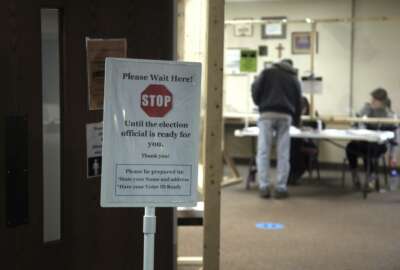
Janitor-Marine-TSP millionaire tackles Social Security offset and windfall
While most feds oppose WEP and GPO, today’s guest columnist said he’s looked at the background, crunched the numbers and in his opinion they are fair.
When they were enacted decades ago the Social Security Windfall Elimination Provision and Government Pension Offset laws were designed to close “loopholes” which Congress said allowed some federal workers under the old Civil Service Retirement System, and/or their spouses, to “game” the system by taking advantage of the differences in the federal civil service retirement program and Social Security.
They’ve been a thorn in the side of millions of feds, spouses and survivors ever since. Major efforts to repeal or modify them have gone nowhere. Most CSRS employees/retirees and their spouses believe that both are punitive or unfair.
Although it’s a long shot, Congress could take action this year which, for 2020 only, requires that any bill getting 290 cosponsors will be brought up for a vote. You do the math!
While most feds oppose WEP and GPO there is a reason Congress enacted them. Today’s guest columnist said he’s looked at the background, crunched the numbers and studied the rationale and, in his opinion — which a lot of people won’t like — they are fair:
WEP and GPO: Right or wrong?
We all have our own preconceptions and partialities, and as a guest columnist for Mike Causey today, I think I need to disclose mine. I started as a janitor for the Department of Veterans Affairs in 1976 and spent four years cleaning toilets to pay for college. I then joined the Marine Corps and after 10 years moved over to become a federal civilian employee. I started out in the Civil Service Retirement System but because the military time is considered a break in service by the Office of Personnel Management, I am now in the Federal Employee Retirement System.
I believe that you have to have balance in everything in life. I remember in the old days, pre-pandemic, how I loved to have a telework day. Now with full-time telework, I can’t wait to get back to the office for just a few days. Just as I try to balance my daily telework life, Congress, in the 1980s, balanced the differences between the CSRS and FERS systems. I like to think that bureaucrats, including Congress, are competent.
The CSRS gives you a really huge annuity. The maximum annuity benefit you can receive from CSRS is 80% of your high-3 average salary, plus credit for your sick leave. The 80% annuity generally takes about 41-42 years of federal service. I have to say “Wow!” Who heard of 80% annuities?
I wanted to stay in the CSRS for my career but because of that military time, I was switched to FERS. For 42 years in FERS, the maximum benefits I can receive is 45.2% of my high-3 average salary, plus credit for sick leave. Again, wow! Eighty percent versus 45.2%. The difference is that I can also apply for Social Security and I can withdraw from my Thrift Savings Plan. As a footnote, Mike did an article on me as the janitor to TSP millionaire. My TSP made it to $1.2M in January of this year and today my TSP has dropped to around $875K. I guess I should also tell you that I have 39 years of federal service this year.
I have done the math both ways. The CSRS, with its 80% annuity, really sounds enticing. But the math tells me I can be just as happy in FERS if I invested in the TSP and don’t apply for Social Security before age 67. I think we as a society need to be more honest in our appraisal of everything and acknowledge that there is almost always a counterbalancing argument on the other side of every issue. I think the CSRS and FERS are both really great and offer different roads to the same comfortable retirement. The federal government does not pay high salaries like outside employment but at the end of the day, if you stick it out to the end all the benefits including the annuity make federal service worthwhile.
And that brings me to the two so-called “evil twins” — WEP and GPO — which have “allegedly” denied hundreds of millions of dollars in Social Security benefits to many if not most government retirees under the old CSRS, or to their surviving spouses. Again let’s see the two sides of the argument:
People have argued about the best retirement pension for decades. Do you want the CSRS or FERS? When the economy is booming everyone wants to be in FERS because TSP accounts are going over a million dollars in value. Now that the pandemic is hitting the CSRS looks better because you have locked in that big annuity. When the government switched to FERS, you were eligible to switch to FERS and you could have avoided WEP and GPO. Every CSRS employee had a chance to get in the FERS program. They were encouraged to switch to FERS. OPM even advertised that FERS would be better, but everyone I know looked at the two plans and picked CSRS because of that big annuity. Additionally CSRS employees could have invested on their own in the stock market and IRAs, etc. but they were ineligible for the TSP.
So what are WEP and GPO? In my opinion WEP and GPO were a result of CSRS employees trying to game the system. They wanted to maximize their CSRS pension while not paying Social Security taxes. Then they wanted to switch and work in jobs for enough quarters to qualify for Social Security. Then they wanted to receive maximum Social Security benefits. Other people also have tried to file for spousal social security benefits early and hold off filing on their own benefits so they could get larger payments later. The Social Security Administration stopped these types of filings to avoid these people from gaming the system to receive more benefits than they were entitled too. For example, a CSRS employee retires at 42 years with 80% of her $100,000 salary resulting in an annuity of $80,000 and now wants to collect Social Security on top of that. It would be possible for this employee to earn more in retirement than she did working!
I have no problem with people trying to maximize their benefits. But when the government identifies that a group is getting a much larger payment than would normally be allowed (or based on their contribution) because of a hiccup or glitch in the system, then we correct the glitch with things like WEP and GPO. These CSRS people were and are entitled to one of the best annuities in the world. They can be eligible for up to 80% of their working salaries. It is expected and normal that they would receive reduced or lowered Social Security payments. It was planned this way. According to the Social Security webpage, WEP and GPO were implemented in 1983. But FERS didn’t start until 1987. So if a CSRS employee wanted to avoid WEP and GPO they could have switched to FERS. But I am pretty sure that the 80% annuity kept just about everyone in CSRS.
Once again I think that if we give these people more benefits than their contributions require, there will be additional costs to government. They want something they were never promised. I think we should be careful with our government dollars. I don’t think WEP and GPO, which fixed an abuse, hiccup, glitch, etc., should be repealed to provide a windfall to a group that seems to have been fully compensated.
Nearly Useless Factoid
By Amelia Brust
The highest swinging bridge in America can be found in Grandfather Mountain state park in North Carolina. It measures a mile high and 228 feet long to connect two of the mountain’s peaks.
Source: Wikipedia
Copyright © 2024 Federal News Network. All rights reserved. This website is not intended for users located within the European Economic Area.
Mike Causey is senior correspondent for Federal News Network and writes his daily Federal Report column on federal employees’ pay, benefits and retirement.
Follow @mcauseyWFED





